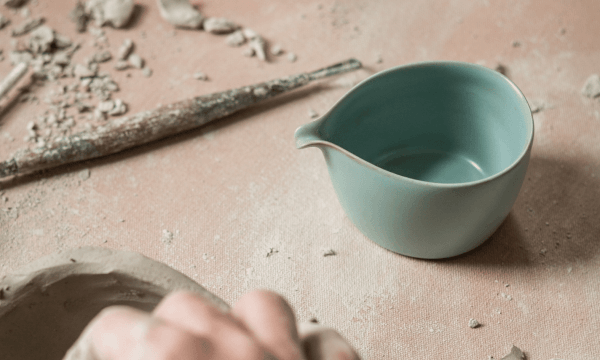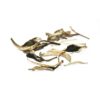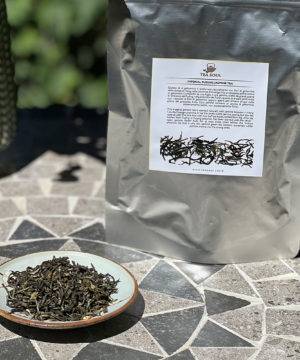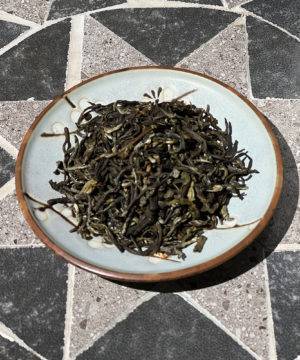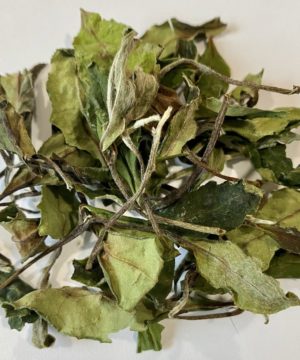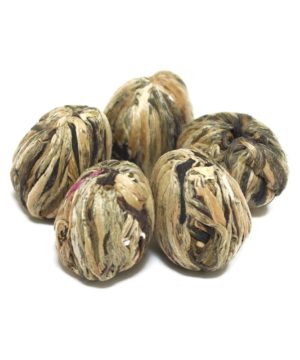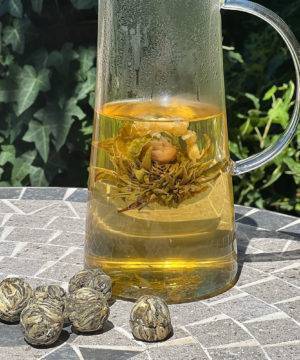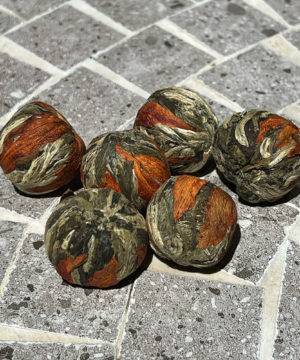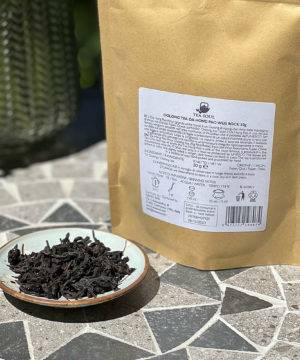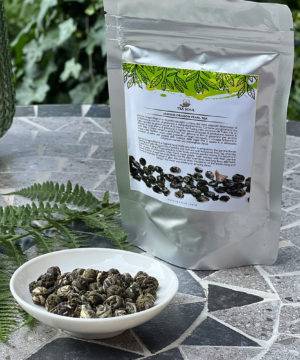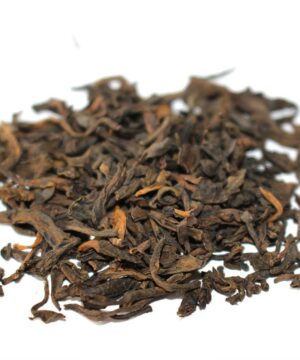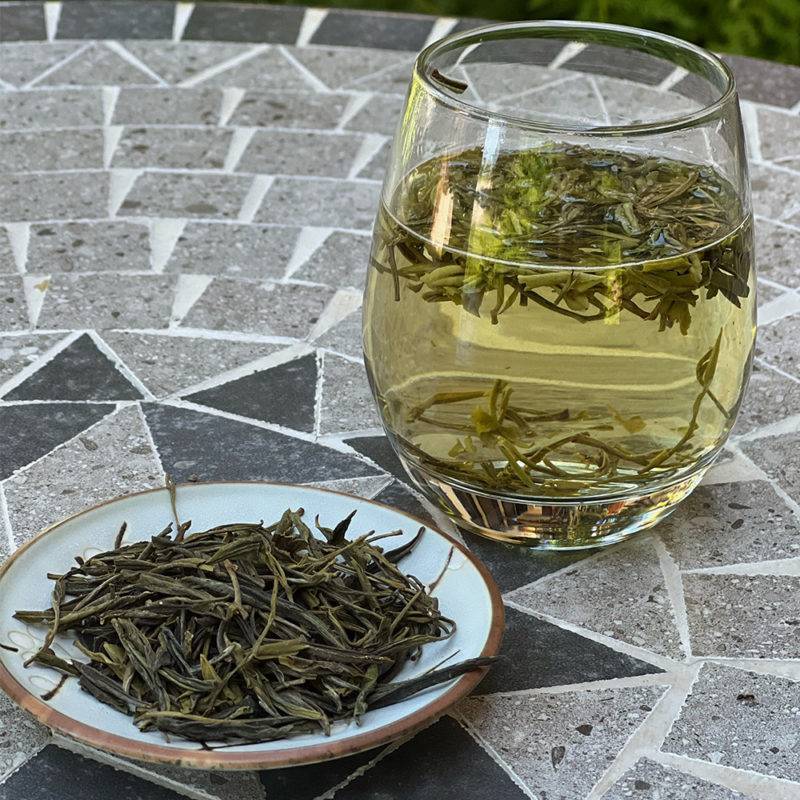







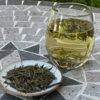



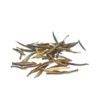

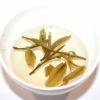

Huoshan Huangya Yellow Tea
10.40€ Taxes included
Huoshan Huangya yellow tea is a very high quality tea formerly served at the imperial court. The long process makes it a rare and precious tea with an extremely sweet and elegant taste.
SKU: te-giallo-huoshan-huangya
Categories: Promo Flash, 35% Off, Tea, Yellow tea, TrovaPrezzi, REGIONS, Anhui China
DON'T MISS DISCOUNTS AND NEWS!
Subscribe to our WhatsApp channel and receive all updates quickly and conveniently!
Subscribe to our WhatsApp channel and receive all updates quickly and conveniently!
Huoshan Huangya yellow tea is a tea of the highest quality, which was formerly served at the imperial court.
To prepare it best, Gaiwan is recommended in order to savor the high quality, fragrance and delicious taste that will be revealed infusion after infusion. The most significant characteristic is its delicate chestnut flavor, combined with a sugary sweetness that lingers on the palate for a long time.
Tasting – Sight and smell
Huoshan Huangya yellow tea leaves are thin, straight and tapered, with a color ranging from sage green to olive green and a good presence of buds. Once soaked, the leaves give off very sweet scents of white sugar and honey, delicate vegetable scents and a more herbaceous note of fresh hay. In the cup, the liquor is a soft yellow tending to pinkish, with a light, silky body and no bitterness or astringency.
Tasting Notes
GONG FU CHA
The first infusion of Huoshan Huangya yellow tea has a distinct sweetness that lingers in the back of the throat and delicate hints of fresh fava beans and peas. With the second infusion, soft hints of boiled chestnut emerge, and the sweetness evolves into more vegetal notes of spinach and butter carrots. The third infusion brings further intensification of the chestnut note; fruity hints of pear and a hint of vanilla also appear, while the finish is fresh and slightly herbaceous.
WESTERN
At a first sip of Huoshan Huangya yellow tea, one can already taste the sweetness that sets it apart: boiled chestnut, pear, dried figs, and white sugar emerge among the most distinctive scents. The middle notes are vegetal and very delicate, such as steamed carrots, peas, and fresh bamboo shoots. There is even a note reminiscent of the soft sweetness of white bread, before a sugary and slightly fruity closure of long persistence.
Place of origin
Bai Ma Jiang Peak, Da Bie Shan Mountains, Huo Shang County, Anhui, China.
Production
Yellow tea (huang cha) is a rare variety of tea harvested in spring. It is made in a similar way to green tea, but involves an additional step: after cooking, the leaves are piled on top of each other while still moist and warm and wrapped in cloth or paper sheets, an operation that promotes nonenzymatic oxidation (a kind of caramelization) and gives the leaves a slightly yellow tint. This process causes the tea to develop a sweeter, less herbaceous taste than that found in green tea.
Ingredients: yellow tea.
Discover all the benefits of yellow tea.
Preparation of Huoshan Huangya yellow tea
It is recommended to use glass or porcelain based accessories. Rinse the teacup and teapot with hot water. Use about 3 grams of tea leaves (2 teaspoons) per 200 ml of water. For the first infusion, leave the leaves in hot water at 75°C for 3 minutes and gradually increase the time by 30 seconds for subsequent infusions.
Storage: Store in a cool, dry and dark place.
Black Friday 50
| Weight | 0.000000 g |
|---|---|
| Dimensions | 0.000000 × 0.000000 × 0.000000 cm |
| Detail - Weight | 5g |
| PACKAGE | 250 g, 50 g, 500 g |
| Detail - Temperature | 75°C |
| Detail - Brewing | 50g = 20 cups |
| Feature - Caffeine | High Caffeine |
| Feature - Oxidation | Spontaneous oxidation |
| Feature - Fermentation | Slightly fermented |
| Other - Packaging | in bulk |
| Other - Origin | China |
| Other - Taste | Dry fruits |
| Other - Consistency | Light |
| Other - Recommended for | Refresh |
| Preparation - CUP | 3gr x 200ml / 3 minutes / 2 brewings |
| Preparation - GAIWAN | 5gr x 150ml / 25 – 35 – 45… sec / 5 brewings |
| Season |
Still no Reviews for this Product
Related products
9.20€ Taxes included
Earn up to 61 points.
This product has multiple variants. The options may be chosen on the product page
Sale!
REGIONS
9.20€ Taxes included
Earn up to 41 points.
This product has multiple variants. The options may be chosen on the product page
9.20€ Taxes included
Earn up to 81 points.
This product has multiple variants. The options may be chosen on the product page
9.20€ Taxes included
Earn up to 81 points.
This product has multiple variants. The options may be chosen on the product page
Fujian China
12.80€ Taxes included
Earn up to 110 points.
This product has multiple variants. The options may be chosen on the product page
Jasmine tea
9.20€ Taxes included
Earn up to 34 points.
This product has multiple variants. The options may be chosen on the product page
Puer tea
6.90€ Taxes included
Earn up to 25 points.
This product has multiple variants. The options may be chosen on the product page





